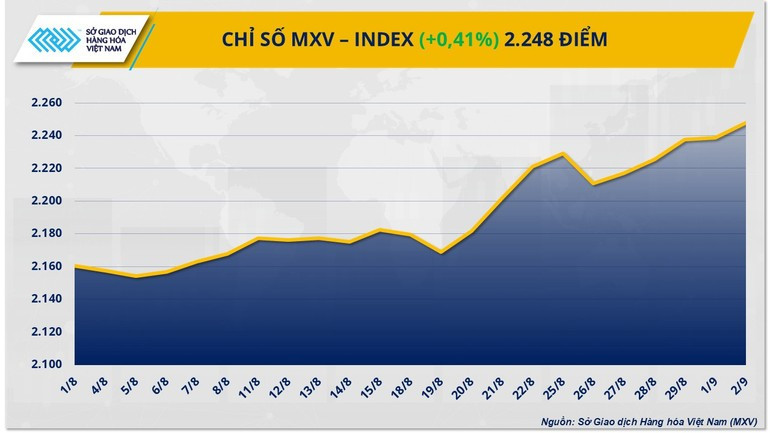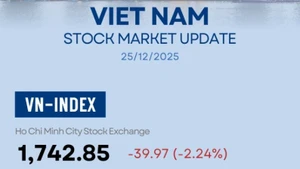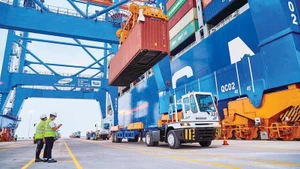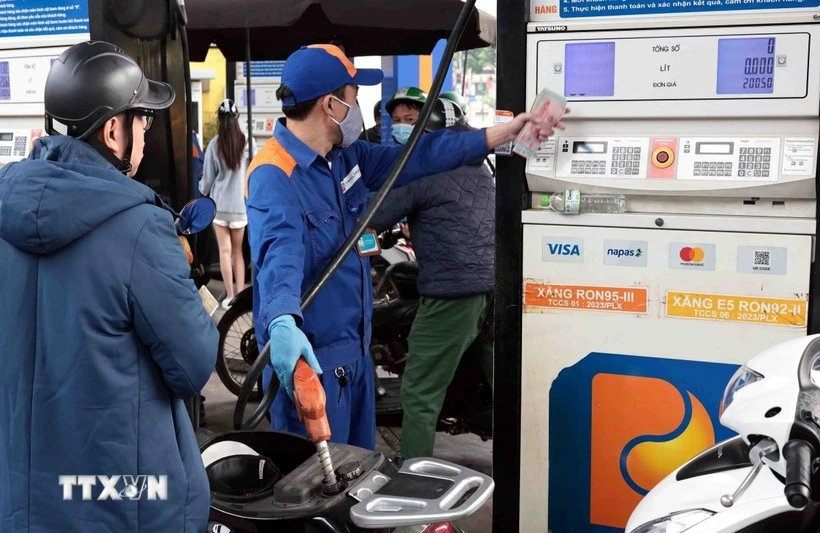Coffee market adjusted to decline amid positive supply signals
At the close of trading yesterday, most major products in the industrial materials group decreased prices. Notably, two kinds of coffee fell sharply. Arabica coffee fell by more than 4% to 8,164 USD per tonne, while Robusta dropped nearly 5% to 4,399 USD per tonne.
According to MXV, exchange rate fluctuations along with favourable weather conditions in key producing countries such as Brazil and Viet Nam exerted pressure on coffee prices yesterday. In the past three weeks, the Brazilian Real has weakened by about 1.3% against the US dollar. The depreciation of the domestic currency is considered a factor encouraging exports in Brazil and thus increasing the country’s coffee supply globally.
In addition, weather conditions in Brazil have continued to improve, while Viet Nam still enjoys favourable weather for production. Data from Barchart show that recent rainfall in Brazil exceeded the average, easing concerns over next season’s output. In particular, Minas Gerais State – the country’s largest coffee-growing region – recorded 10.1 mm of rainfall in the week ending August 30, equivalent to 163% of the historical average level.

In Viet Nam, weather in the Central Highlands last week brought some light rain but did not affect coffee growth. Coffee cherries have grown large, and trees are resilient to water, showing good resilience, ensuring steady development.
Updates on coffee production in major countries show that Brazil is entering the final stages of the harvest. According to Cooxupé, the country’s largest coffee cooperative, by August 29, members had completed 94.9% of their harvest. Earlier, consultancy Safras & Mercado reported that by August 20, Brazil had harvested 99% of the 2025–2026 crop, including 100% of Robusta and 98% of Arabica.
Meanwhile, in Viet Nam, coffee farms in Buon Ma Thuot (Dak Lak) have begun early fruiting, though output remains limited. Other areas have also reported small early harvests. Farmers, however, report that this year’s coffee trees are developing well, with expectations of high output in the coming harvest.
However, the coffee market still faces two major challenges — tariff risks and reduced output forecasts for Brazil’s 2025–2026 crop. Over the weekend, the Brazilian Coffee Exporters Council (CECAFÉ) expressed its concerns about the federal government considering the application of the Countervailing Law in retaliation against the US, a move that could impose tariffs of up to 50% on Brazilian goods exported to the US, including coffee.
CECAFÉ stressed in recent meetings with the private sector and the government that the most reasonable solution now is to maintain constructive dialogue with businesses and US authorities. The organisation said it is premature to consider applying the Countervailing Law, as no official meeting between the Brazilian and US governments has taken place. If the law is implemented, the situation could create more difficulties for Brazilian businesses trading with US importers and further complicate dialogue between the two governments.
Geopolitical tensions push oil prices up sharply
In contrast, MXV noted that rising global geopolitical tensions drove energy prices up sharply yesterday. Crude oil prices, in particular, reached their highest levels since early August. Brent crude rose about 1.45% to 69.14 USD per barrel, while WTI oil prices climbed to 65.59 USD per barrel, an increase of 2.47%.
On the same day, the US Department of the Treasury added to its sanctions a network of shipping companies and vessels run by an Iraqi and a St. Kitts & Nevis national based in the United Arab Emirates (UAE). The network was accused of blending Iranian oil with Iraqi oil and selling it as Iraqi-origin to evade current sanctions.
These new sanctions have increased the risk of escalation between Iran and Western countries over Tehran’s disputed nuclear programme. Earlier, Iran, along with Russia and China, opposed a plan by the UK, France, and Germany to reimpose UN sanctions, arguing that Iran had violated the 2015 nuclear agreement.
Complicating developments in relations between the US and three key BRICS members – Russia, India, and China – have also supported rising oil prices. From August 31 to September 1, the Shanghai Cooperation Organisation (SCO) Summit 2025 was held with the participation of Chinese President Xi Jinping, Russian President Vladimir Putin, Indian Prime Minister Narendra Modi, and more than 20 other heads of state.
Investors are increasingly concerned about a strong reaction from US President Donald Trump, particularly as his government continues to pressure China and India – Russia’s two largest oil customers – to shift supplies from the world's second-largest oil producer. Despite negotiations was held in mid-August, relations between Russia and the US remain strained, especially amid tensions over the prolonged conflict in Ukraine.
In his latest statement, US Treasury Secretary Scott Bessent said the government was considering stronger sanctions measures on Russian crude oil, raising risks of supply disruption. At the same time, tensions have escalated in relations between the US and Venezuela, one of the major oil suppliers in OPEC+.
Recent developments in OPEC+ have also drawn investor attention. Speculation in the market is that the group’s upcoming meeting on September 7 will decide to maintain current output levels instead of raising production as in previous months. This decision would align with the end of the US peak travel season after Labour Day (September 1).
As a result, data from the US market, particularly the weekly reports from the American Petroleum Institute (API) and the US Energy Information Administration (EIA), will play a crucial role in guiding the decision by OPEC+. It should be noted that due to the September 1 Labor Day holiday, the release of these two reports will be delayed by one day, to September 4.
















